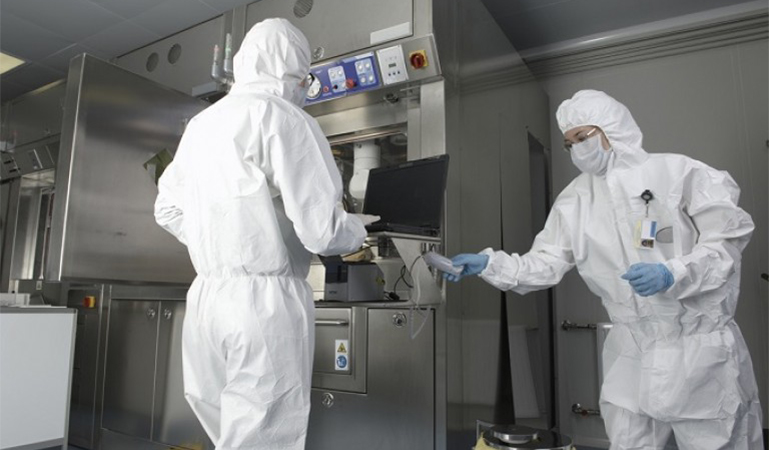For pharmaceuticals that cannot be given terminal sterilization at the end of production, the alternative of aseptic fill is available, requiring sterile materials placed in sterile containers in a cleanroom. Nonviable particles >10 µm and viable particles must be kept away from the product. Part of contamination control involves wiping the walls, tables, and equipment so as to remove contamination. Another part is disinfection. The cleaning of aseptic fill areas must be done in a systematic manner, described here, and audited for effectiveness. Removal of contaminants aids disinfection and is usually carried out by chemical means, using sterile wiping materials.
Cleaning Aseptic Fill Areas
11 November 2019
Category: General Info

Advanced methods of contamination control are essential to successful pharmaceutical manufacturing, especially pharmaceuticals that do not receive terminal sterilization but rather are packaged using aseptic fill techniques in cleanrooms. The rooms typically contain automated equipment and some personnel, filling vials, IV pouches, etc., with measured amounts of a given drug. The strategy is simple: sterilize the containers, sterilize everything that enters the containers, then perform the filling in a virtually sterile environment. Planning and building such cleanrooms was covered in a recent article by Hansz and Linamen1.
Useful details and standards concerning various aspects of sterilization are available in the recent book by the Association for the Advancement of Medical Instrumentation, covering ethylene oxide, steam, other chemical sterilants; gamma radiation; and electron beam radiation2. Background information on cleanroom microbiology is available in a new book by Carlberg3.
Useful details and standards concerning various aspects of sterilization are available in the recent book by the Association for the Advancement of Medical Instrumentation, covering ethylene oxide, steam, other chemical sterilants; gamma radiation; and electron beam radiation2. Background information on cleanroom microbiology is available in a new book by Carlberg3.
Unfortunately, personnel and their garments cannot be made and kept sterile, so one must rely on clean airflow, garments, gloves, and cleaning to protect the products from biological contamination and isolate the workers from the products. To provide cleanliness and sterility, clean and sterile materials are introduced into cleanrooms or clean zones that are controlled to Federal Standard 209E, Class 100 or better, for air cleanliness. This means the air can contain no more than 100 particles >0.5 µm per cubic foot. The level of viable particles in the air is much lower than this, and efforts are made to prevent even one viable particle from being incorporated into (or onto) the product being made. Much useful information on microbial sampling of air and surfaces (including an extensive tabulation) and the control of microorganisms in the cleanroom is available in IES Recommended Practice 23.1.4
Cleaning the aseptic fill area is made more difficult by the variety of surfaces that need attention: barrier curtains, walls, windows, floors, ceilings, table tops, and machinery with complicated inner and outer surfaces. In what follows, general principles of cleaning and making surfaces sterile are put in the context of cleaning aseptic fill rooms.5, 6
Download PDF below for complete article